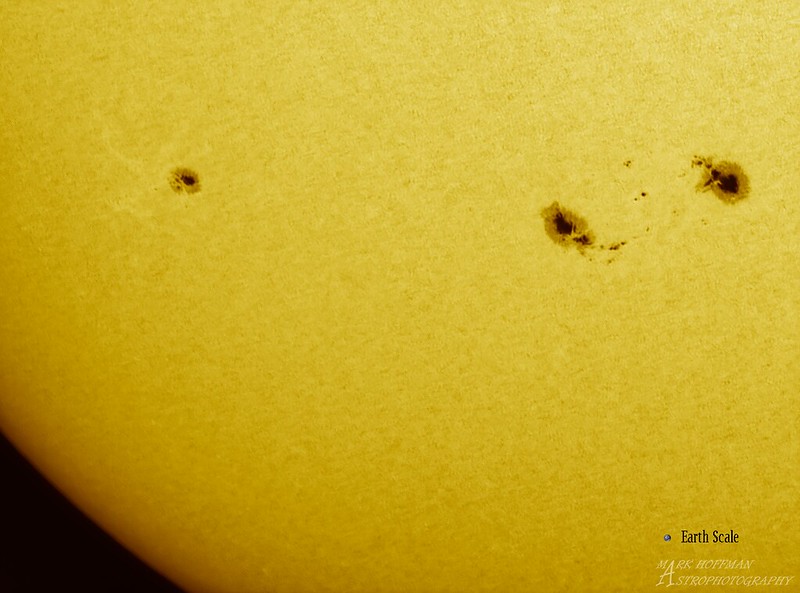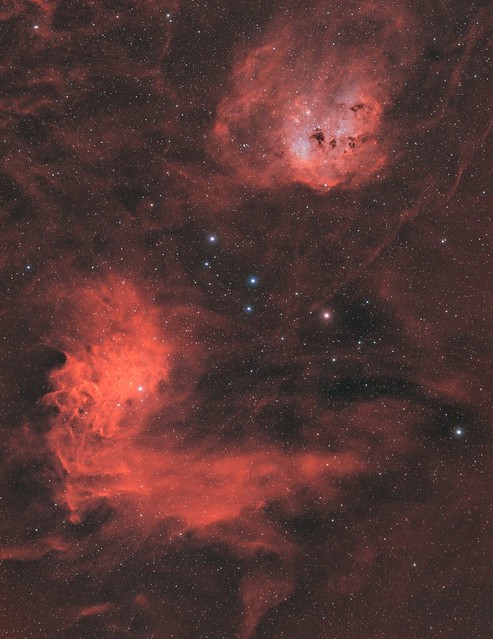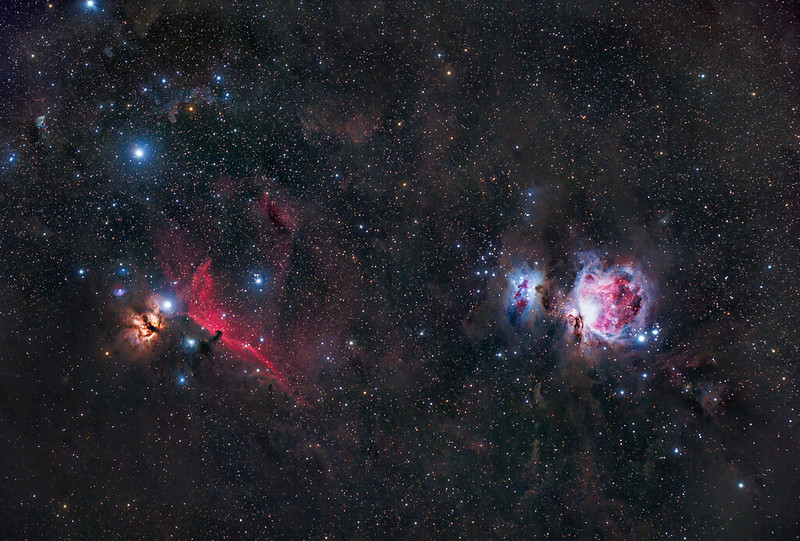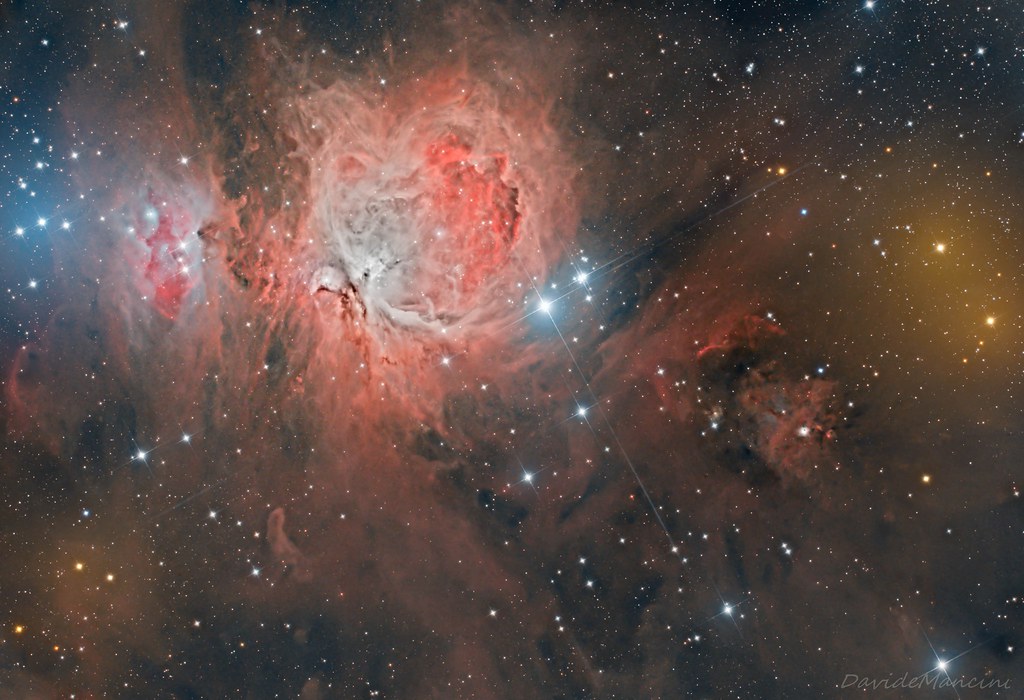
Hello,Today, with as much fatigue as with pride, I present to you my biggest astrophoto project to date, the big Spaghetti Nebula (Simeis 147 or SH2-240) in HOORVB mosaic of 2 tiles.
Full resolution is here :
https://astrob.in/043eov/B
It's an object that has always fascinated me, that I dreamed of shooting knowing it wouldn't be easy.
SPOILER: It was worse than that!
It took me 2 months to acquire enough lights to make anything out of it.
Indeed, I shot 14 winter nights between November and January (5 of which played with my nerves with the fog lifting at nightfall without being able to do anything).
You should know that I could not even shoot the Ha during the moonlight because it passed directly over my target and was therefore very close over ten nights per cycle.
Since this project is particularly close to my heart and living in an apartment, I decided to put all the chances on my side by making the necessary route to go shoot where the weather would allow it.
So I shot from the Vosges, I camped in 0 ° C in Alsace, I shot from my astrobro Christope in Moselle, I went south of France to Valensole and I moved on several spots on several nights in this region.A total of 3,600 km of road to acquire the 55 hours of lights retained which consist of:
Tile 1:
Ha -> 71x600 ’’
Oiii -> 78x600 ’’
R G B -> 90x10 '' per filter
Tile 2:Ha -> 94x600 ’’
Oiii -> 78x600 ’’
R G B -> 90x10 '' per filter
While the acquisition was long and complex, so was the processing, I had to work with 400GB of data for a final image of 15 000 x 12 000px.Suffice to say that the PC has smoked!
Once again a big thanks to Christophe who illuminated me with his advices during the processing and gave me invaluable help, thanks also to Nico for his always correct eye!
Technical part:
Takahashi FSQ106 EDX4 with 645-QE super reducerAsi 2600MM Pro
Barilla (Antilla) RGB + H and O 3nm filters
Eq6r-pro
Altaïr 60/225 guide + asi 290mm mini
Sky bortle 3-4
Acquisition: N.I.N.A + Phd2
Processing: Siril + PixInsight + Photoshop
Taken in several parts of France between 2021/11/10 and 2022/01/03
Copyright : Yann SAINTY













